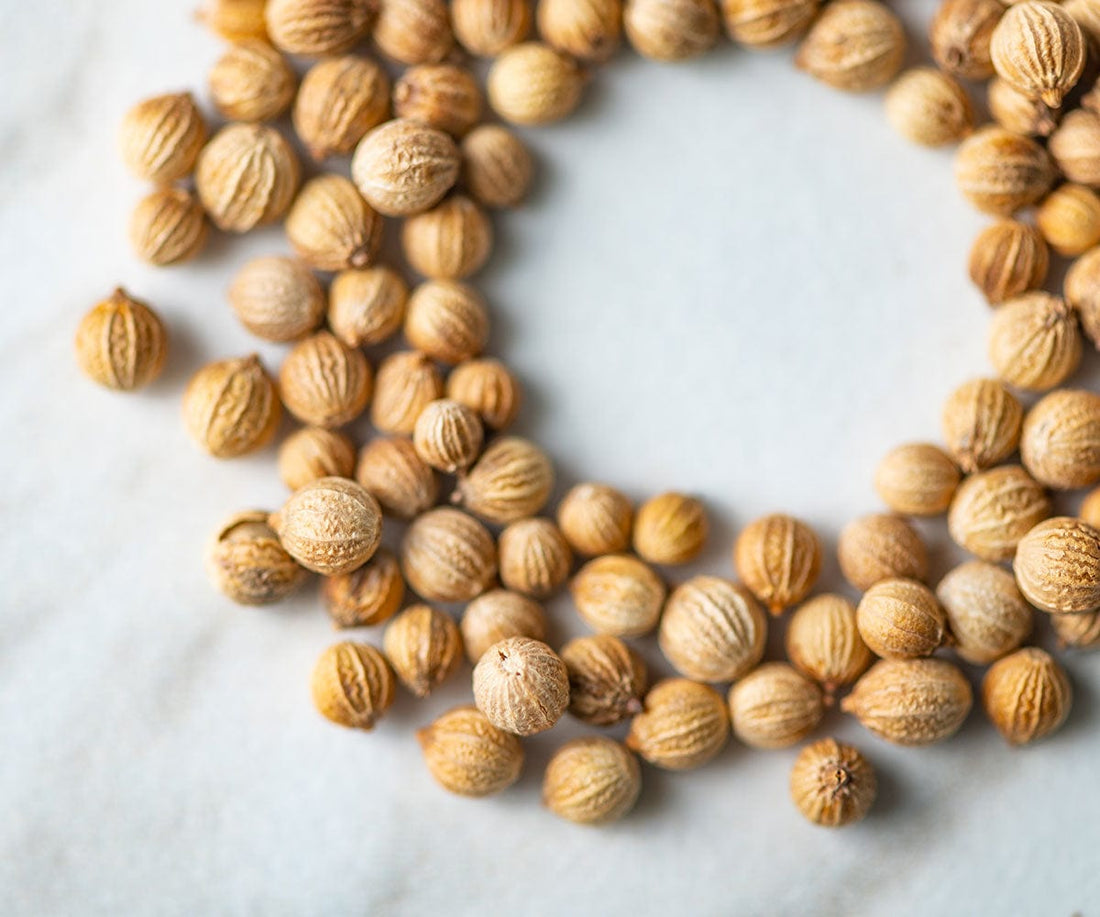African, Central & South American, Caribbean, Mediterranean, Middle Eastern, and of course Asian cuisines from North to South: what ties all of these together?
It’s the near-global use of the Coriandrum sativum, the plant that produces, you guessed it, both coriander and cilantro. The seeds and leaves of C. sativum have vastly different flavor profiles and culinary uses.
In many parts of the world, the leaves and seeds are often referred to singularly as coriander (we're looking at you Great Britain) but in North America, we distinguish the fresh, flat-leafed herb of the plant by calling it cilantro (which is actually just the Spanish translation of coriander). Quick note that there are other names for this mighty spice, in India, the leafy part of the plant is called dhania.
Cilantro
Let’s start at the top… of the stem, that is. Cilantro (in case you skipped the intro: the leaves of the coriander plant) has a flavor that’s reminiscent of lemony citrus and pepper… unless you’re one of those people who think cilantro tastes like soap, that is. It’s not your fault—it’s genetics. If you do suffer from cilantro-hate, I recommend skipping to the coriander section of this post. This part is all about that cilantro love.
What Flavor Does Cilantro Add?
This one-of-a-kind herb has the cooling power of mint and some of the same flavor notes of basil. Cilantro is almost exclusively used in savory dishes and shines the brightest when used fresh at the end of the dish as opposed to being added at the beginning of the stewing, baking, or grilling process.
Fresh cilantro adds brightness and fresh flavor, as well as a pop of color, to a finished dish when used as a garnish. It can also be blended into a finishing condiment, like a cilantro pesto. Try making your favorite pesto recipe but replace basil with cilantro and substitute walnuts or cashews in place of pine nuts for a sauce to spoon over dishes from any of the cuisines listed off in the intro. Want something a little spicier? Yemeni Zhoug (also spelled zhug) is similar to a cilantro pesto sans nuts and cheese but with the addition of spicy peppers and spices like cumin, cardamom, and caraway.
And if you're one of those people who think cilantro tastes like soap, congratulations! You might be a supertaster. We don't really know what percentage of the population are supertasters but these folks have the fortune (or bad luck, depending on who you ask) of being born with more tastebuds. There's still a lot to learn about supertasters but these individuals are generally much more sensitive to bitter flavor compounds.
[newsletter]
Cooking with Cilantro
You might be thinking: “I love cilantro; I want to infuse it in my dish from the start!” I’m with you, fellow cilantro fan. That’s where dried cilantro comes in. During the drying process, it does lose some of it’s bite.
It all has to do with volatility. Chemically speaking, volatile flavor compounds are molecules that are itching to escape their liquid or solid structures and vaporize into the atmosphere. When most herbs are dried (or cooked for long periods), the flavorful molecules in charge of the bright, sharp flavors evaporate, which allow the pepperiness or vegetal earthiness to concentrate in the final product.
For this reason, dried cilantro is best added to long simmers, marinades, or into rice while it’s cooking where it has the chance to infuse its more subtle flavors over time.
Coriander
Most people are oh-so-familiar with cilantro from a lifetime of seeing it’s bright green color sprinkled on tacos and chili or stirred into salsa, but coriander can sometimes be passed over as just another spice in a blend. I used to be one of those people, but I’ve come to adore coriander as I’ve incorporated it more into my cooking. My love toward the seeds might be recent, but that doesn’t mean it runs any less deep.
What Does Coriander Taste Like?
Ground Coriander can be compared to ground ginger because of its intense bright citrus flavor with more developed undertones of fragrant pepperiness. It pairs well with sweet-warm spices like the aforementioned ginger, nutmeg, cinnamon, cardamom, and cloves, which means it’s a great addition to sweet (or savory!) baked goods for a little extra oomph. Coriander is a common component of curry powders of all types, from red and green Thai curries to Tandoori Seasoning and Punjabi Garam Masala. Here’s the deal: if it’s a curry, it probably has coriander.
Cooking with Coriander
Coriander seeds play a supporting role in Spanish spices, Chilean blends, and even BBQ rubs. The bright flavor means whole seeds are great additions to pickling liquids, marinades, and meat brines. Remember volatility? Dried seeds hold their flavor extremely well compared to delicate leaves (whole seeds especially so), which means they should be added at the beginning of cooking. If you have the time, toasting seeds gently and grinding right before you use them will yield maximum tastiness. And trust me, you want all the coriander flavor you can get.
What’s your favorite way to use cilantro and coriander? Show off your favorite recipes by tagging @savoryspiceshop on Instagram!


